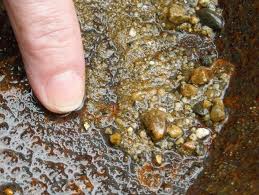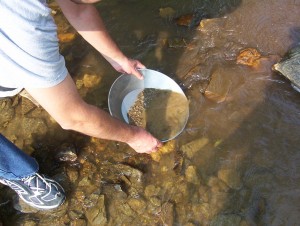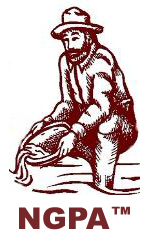How to Identify Where To Find Gold in a Creek, River or Stream

 Before you start looking for gold in a particular stream, creek or river, take time to test out an area in advance of settling down to a day’s work. A fast check can be made by starting with grass that during flood time had been under water. Pull a clump from the ground and carefully catch all the soil that clings and place all in a pail of water. Work the sand and gravel loose by rubbing, squeezing, pulling apart and dousing up and down until the grass blades are free.
Before you start looking for gold in a particular stream, creek or river, take time to test out an area in advance of settling down to a day’s work. A fast check can be made by starting with grass that during flood time had been under water. Pull a clump from the ground and carefully catch all the soil that clings and place all in a pail of water. Work the sand and gravel loose by rubbing, squeezing, pulling apart and dousing up and down until the grass blades are free.
Pan this “sample” out and you will be surprised at the amount . . . and size . . . of the pebbles and gold which had become embedded around and within the roots.
If there is “color,” there’s more gold around and you have a place to start panning and prospecting in earnest!
As you begin to find “dust” or “flour” gold and hope to find larger nuggets, try moving upstream. Remember, coarse gold drops out first as rocks roll down a river; finer gold is carried farther.
But if you go too far and start to encounter empty pans, go back to where you began and try another tactic. Try to trace the pattern of how the gold got there.
 Check out your particles of gold, using a magnifying glass: if they have sharp edges, they haven’t traveled very far; if they are rounded and smooth, they have. Ask yourself, “Was this gold dropped here from the current?” or “Did it wash down from the high bank?”
Check out your particles of gold, using a magnifying glass: if they have sharp edges, they haven’t traveled very far; if they are rounded and smooth, they have. Ask yourself, “Was this gold dropped here from the current?” or “Did it wash down from the high bank?”
If you decide they have come via the river, then by all means, move upstream where the heavier gold would have settled out first.
If you decide the gold hadn’t traveled far, it’s possible you are just below the place where the spring floods had washed it down to the river . . . and it may be possible for you to follow the trail of “float” uphill, and who knows, you may trace the gold to its source!

